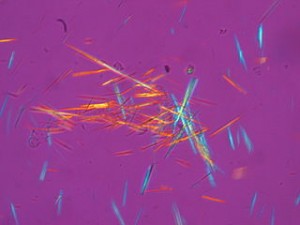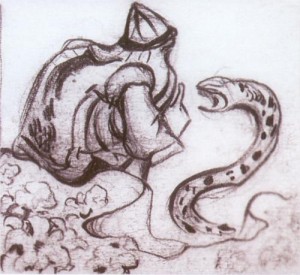Here are the first ten white magic spells. I will probably expand the descriptive text slightly in the final version, but I want to maintain concision. I’m not sure exactly what the best way to present the requirement for spell check rolls (which are, recall, 1d20 +level +WIS, for white spells). On the one hand, I don’t want to clutter up all the spells with boilerplate like spell check WIS vs. magic defense, as I think it is obvious from the context. On the other hand, I do want the intent to be clear.
And yeah, that’s a black mage picture to the right, on a post about white magic. I don’t have a good white mage image to use that isn’t “borrowed.”
White Magic Spells Level 1
- Absorb
- Barrier
- Courage
- Cure
- Endure
- Gust
- Light
- Repel
- Restore
- Seal
Absorb
Properties: interrupt, ranged.
Spell contest to cancel all damage from a single target elemental spell, which need not be targeting the caster of absorb. Gain one temporary mana if the targeted spell is successfully absorbed.
Barrier
Properties: ranged, sustain.
Make a spell check (versus an enemy’s attack roll) to deflects mundane missiles directed toward the target of barrier. Mundane missiles include arrows, sling bullets, spears or snow balls, but not boulders. This effect works as an interrupt, but unlike most interrupts does not count toward the standard one interrupt per round limitation.
Courage
Properties: allies, sustain.
Dispel magical fear in all nearby allies. If sustained, grants a continuing +2 bonus to morale and saving throws versus fear.
Cure
Properties: ranged.
Target regains 1 HD +WIS HP. Deals 2d6 +WIS damage if cast against an undead target (half damage on miss).
Endure
Properties: ranged, sustain.
Choose an element. Target gains +1 to saving throws against that element and damage reduction equal to the caster’s WIS to damage of the chosen elemental type.
Gust
Properties: ranged.
Conjure a powerful blast or single target vortex of wind. This wind is strong enough to knock over a charging horse. Vortex will do damage to a flying creature (damage-2d6, half damage on miss). On a hit, the vortex will also knock the flying creature out of the sky.
Light
Properties: light, sustain.
Magical light radiates from the crystal. This light illuminates as a torch and wards against creatures of shadow.
Repel
Properties: area, sustain.
Spell check +WIS versus magic defense forces any affected undead to retreat from the caster. If sustained, any undead affected will retreat before the caster (though they may still fight in melee). The caster must spend another point of mana and make another spell check if more undead are encountered, thought the previous repel effect is maintained.
Restore
Properties: touch.
A medium sized mundane object may be mended or restored to working order. Restore will knit together a cut rope, straighten a bent sword, or repair a broken vase. Restore does not allow a new object to be created from disparate parts.
Seal
Properties: sustain.
Magically lock a door or gate. The spell must be broken for the portal to be opened (picking a lock, forcing a door, or massive damage will not work).


